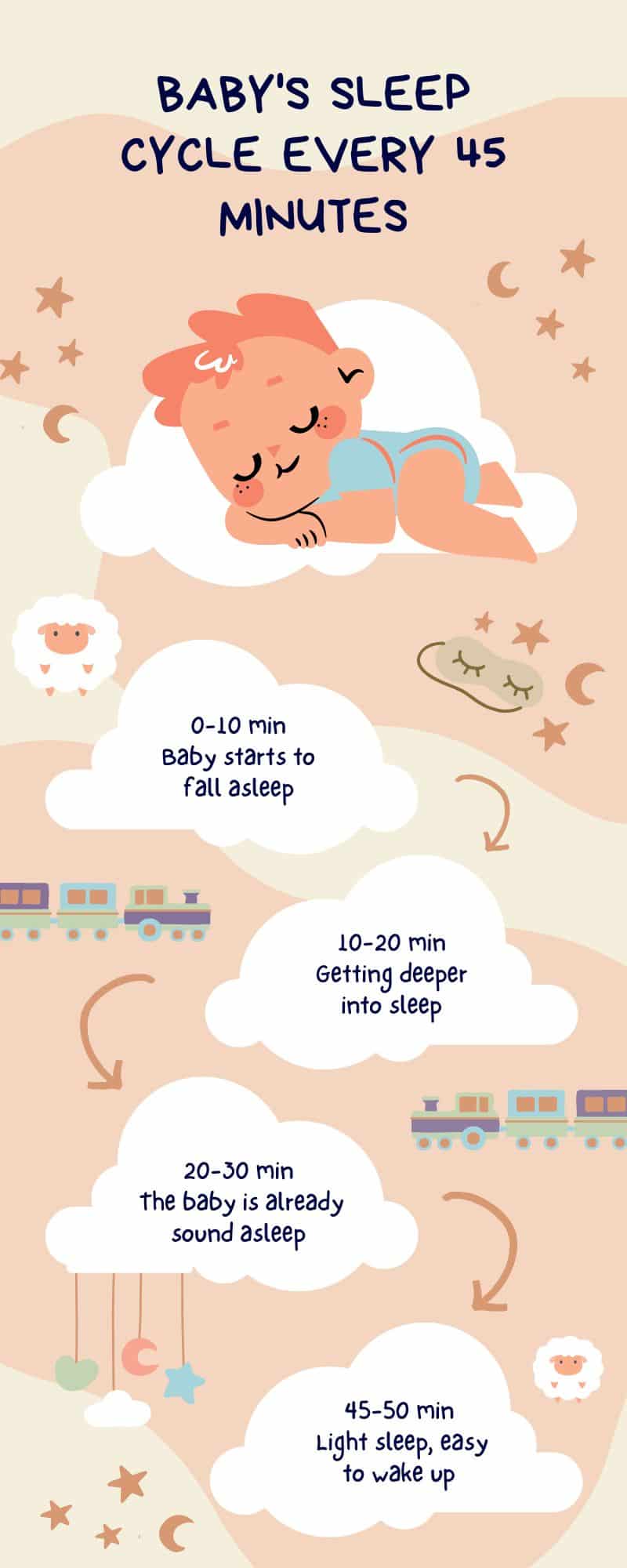Baby Sleep: Tips, Techniques, and Products to Help Your Little One Sleep Better
Are you a new parent struggling to get your baby to sleep through the night? Sleepless nights and exhaustion can be a common occurrence for parents with a newborn, but it doesn’t have to be that way. In this article, we will cover everything you need to know about baby sleep, including tips and tricks for helping your little one get the rest they need.
Introduction:
As a parent, one of the biggest challenges you face is getting your baby to sleep soundly through the night. While some babies are great sleepers right from the start, others struggle to settle into a healthy sleep routine. In this article, we will explore tips, techniques, and products that can help your baby sleep better, so you can rest easy too.
Section 1: Understanding Baby Sleep
Before we delve into techniques and products, it’s important to understand how babies sleep. Newborns can sleep up to 18 hours a day, but they do not stay asleep for long periods. They typically wake up every 2-3 hours to feed, and then go back to sleep. As babies get older, they start sleeping for longer periods and consolidating their sleep into longer stretches at night.
Section 2: Techniques to Help Your Baby Sleep Better
- Establish a bedtime routine: A bedtime routine can help your baby understand that it’s time to wind down and get ready for sleep. It can include a warm bath, massage, storytime, and lullabies.
- Swaddling: Swaddling is a technique where you wrap your baby tightly in a blanket to mimic the feeling of being in the womb. This can help calm your baby and make them feel secure.
- White noise: White noise is a gentle, soothing sound that can help your baby fall asleep and stay asleep. You can use a white noise machine or an app on your phone.
- Gradual withdrawal: Gradual withdrawal is a technique where you slowly move away from your baby’s crib while they are still awake. This helps your baby learn to fall asleep on their own without needing you to be present.
- Room darkening: A dark room can help your baby understand that it’s time to sleep. You can use blackout curtains or shades to keep the room dark.
Section 3: Products to Help Your Baby Sleep Better
- Bassinets: A bassinet is a small, portable bed that is perfect for newborns. It’s a great option if you want your baby to sleep in the same room as you.
- Swaddles: Swaddles are specially designed blankets that make swaddling your baby easier and safer. They come in different sizes and materials.
- White noise machines: White noise machines create a soothing sound that can help your baby fall asleep and stay asleep. They come in different sizes and styles.
- Sleep sacks: Sleep sacks are wearable blankets that keep your baby warm and cozy without the risk of loose blankets.
- Pacifiers: Pacifiers can help soothe your baby and make them feel secure. They can also reduce the risk of Sudden Infant Death Syndrome (SIDS).
Section 4: Common Baby Sleep Problems and Solutions
- Night waking: Night waking is a common problem for babies, especially in the first few months of life. You can try feeding your baby more during the day, establishing a consistent bedtime routine, and using white noise to help your baby fall back to sleep.
- Reflux: Reflux is when your baby spits up or vomits frequently after feeding. This can make it difficult for your baby to sleep comfortably. You can try feeding your baby smaller, more frequent meals and keeping them upright for 30 minutes after feeding.
- Teething: Teething can cause your baby to be fussy and wake up more frequently at night. You can try giving your baby a teething toy, using a cold washcloth to soothe their gums, and giving them infant pain relief medicine if recommended by your pediatrician.
- Sleep regression: Sleep regression is when your baby
The Science of Baby Sleep:
Sleep is a complex process that involves different stages and cycles. Babies, just like adults, go through these stages while they sleep, but there are some differences. For example, babies spend more time in REM (rapid eye movement) sleep than adults. This is the stage where dreams occur and the brain is most active. Babies also have shorter sleep cycles than adults, with each cycle lasting around 50-60 minutes.
One of the reasons babies sleep differently than adults is that their brains are still developing. Sleep is essential for brain development, and during sleep, the brain consolidates memories and processes new information. This is why sleep is so important for babies, especially in the first few months of life.
Strategies for Helping Your Baby Sleep:
While baby sleep problems can be frustrating, there are a number of strategies that can help. Here are some tips for helping your baby get the rest they need:
- Establish a consistent bedtime routine: A consistent bedtime routine can help signal to your baby that it’s time to sleep. This can include things like a bath, a story, and a lullaby.
- Create a comfortable sleep environment: Make sure your baby’s sleep environment is comfortable and conducive to sleep. This can include things like a dark, quiet room, a comfortable mattress, and a temperature that’s not too hot or too cold.
- Feed your baby before bedtime: If your baby is hungry, they’re less likely to sleep well. Make sure your baby is well-fed before bedtime to help them sleep more soundly.
- Avoid overstimulation: Overstimulation can make it difficult for babies to fall asleep. Try to create a calm and quiet environment before bedtime, and avoid activities that are too stimulating.
- Respond to your baby’s needs: If your baby wakes up during the night, try to respond to their needs quickly. This can help them feel more secure and make it easier for them to fall back asleep.
- Consider sleep training: Sleep training is a method for teaching babies to fall asleep on their.
Tips and Tricks for Helping Your Baby Sleep
Now that you understand the basics of baby sleep, let’s dive into some tips and tricks for helping your little one get the rest they need.
- Establish a Bedtime Routine
Establishing a bedtime routine can help signal to your baby that it’s time to sleep. A bedtime routine can include activities like a warm bath, reading a book, singing a lullaby, or rocking your baby to sleep. Keep your routine consistent and try to start it at the same time each night.
- Create a Calm and Comfortable Environment
Creating a calm and comfortable environment can help your baby relax and fall asleep more easily. Make sure your baby’s room is dark, quiet, and cool. Use a white noise machine or a fan to create a soothing background noise. Additionally, make sure your baby’s crib is comfortable and safe.
- Follow Safe Sleep Practices
Following safe sleep practices is essential for ensuring your baby’s safety while they sleep. Always place your baby on their back to sleep, and avoid placing any loose blankets, toys, or other items in the crib. Additionally, make sure your baby’s crib meets safety standards.
- Pay Attention to Sleep Cues
Paying attention to your baby’s sleep cues can help you know when it’s time for them to sleep. Look for signs like rubbing their eyes, yawning, or fussing. When you notice these cues, start your bedtime routine and put your baby to bed.
- Practice Gentle Sleep Training
Gentle sleep training can help your baby learn to fall asleep on their own and sleep through the night. One gentle sleep training method is the pick-up, put-down method. With this method, you pick up your baby when they cry and put them back down when they stop crying. Repeat this process until your baby falls asleep on their own.
- Be Patient
Finally, be patient when it comes to helping your baby sleep. It may take time for your baby to establish a sleep routine and learn to sleep through the night. Be consistent with your efforts, and remember that every baby is different.
Conclusion
Getting your baby to sleep through the night can be challenging, but with the right tips and tricks, it’s possible. By establishing a bedtime routine, creating a calm and comfortable environment, following safe sleep practices, paying attention to sleep cues, practicing gentle sleep training, and being patient, you can help your little one get the rest they need. Remember, every baby is different, so don’t be afraid to try different methods and find
